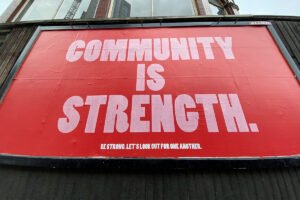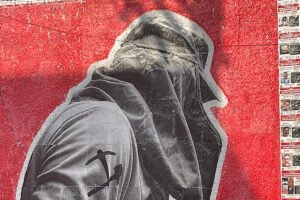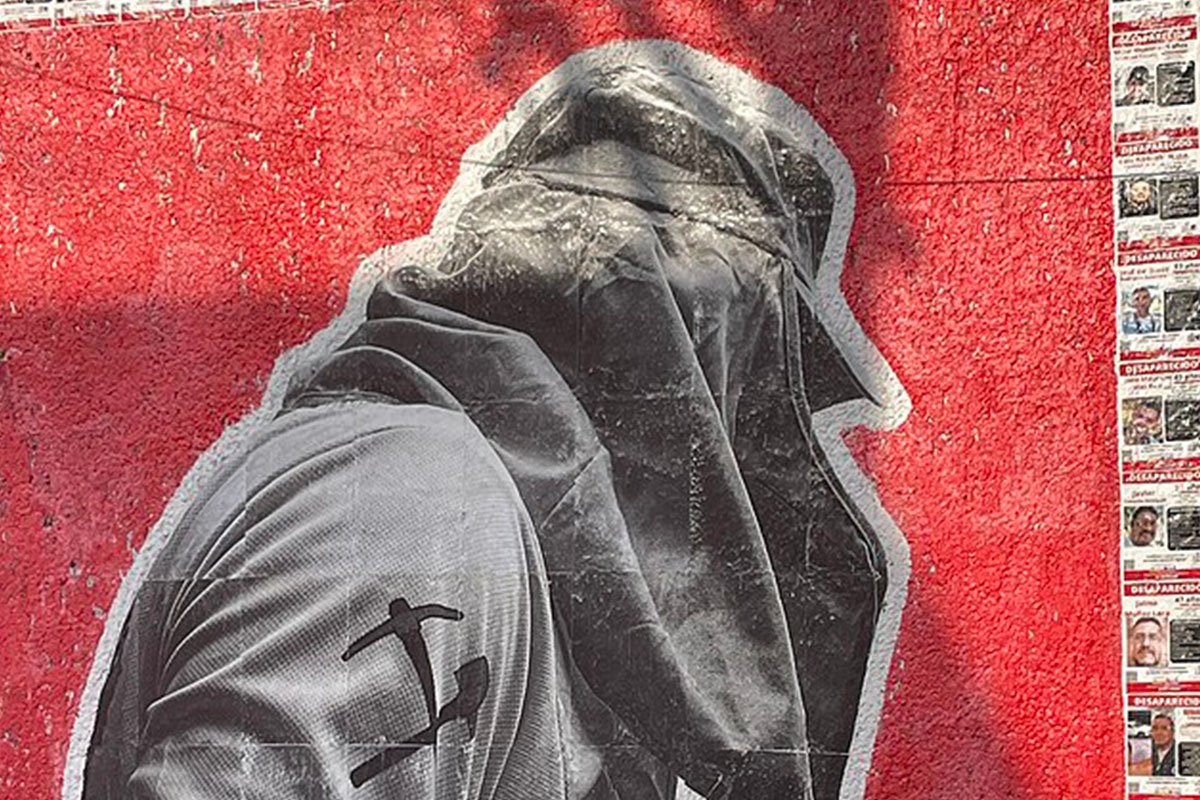
It’s time to have a real conversation about the role of finance—all of it, from Wall Street to university endowments to your friend’s rich aunt—in contributing to harm and inequity among communities of color in the US.
Anyone who cares to look deeply at the intersection of race and the economy knows that the economy doesn’t work on a race-neutral basis. All of its components—the jobs we have; the homes we live in; the services in our neighborhoods, like health care, schools, and shops—serve white communities and communities of color, particularly Black communities, disproportionately.
Take health outcomes: we are tragically seeing COVID-19 taking Black lives at higher rates than white lives. In the confluence of factors here are a number of economic ones, including access to healthcare (which is an indicator of quality jobs in the US), ability to work from home, and representation in frontline work. Exacerbating all of these issues is the (growing) racial wealth gap, which is set to have the median Black family’s wealth be $0 by 2053.
Behind all of these racialized outcomes is one common driver: finance. The financial system determines where capital flows and on what terms, where wealth gets extracted, and what sectors of the economy get funded. Sometimes the link between finance and harm for communities of color is obvious, such as investing in private prisons. Other links are less so, such as investments in privatized infrastructure that disproportionately contaminate the water in Black communities, or in companies with low job quality, which have eviscerated the opportunities for growing a Black middle class.
Yes, the financial system is complex, but it’s not impossible to break it down—and doing so shines a light on how, often unwittingly, it drives racial inequity. As we as a society dig deeper into alleviating racial injustice, how can we let investors, many of whom seem to care about racial justice, know about where race shows up in their investments?
A Few Types of Investors
When we talk about “investors,” we are often talking about those who ultimately own (and therefore control) the assets that get invested: wealthy families, yes, but also labor pension funds, charitable foundations, and university endowments.
Many among those owners undoubtedly do not care about racial justice and view their investments simply as a means of making money. Some care about racial justice in so far as they see some risk in being associated with toxic assets and therefore drawing public criticism from activists; they’d tweak their investments just to stay out of the spotlight. But there are others who do fundamentally care—either out of their beliefs, or because the money ultimately belongs, say, to predominantly Black workers (as in the case of many pension funds), or because they have an explicit mission around racial justice, like some foundations or endowed NGOs such as the NAACP.
For many of these asset owners, the issue of racial justice is not lost. Foundations like the Knight Foundation and universities like those in the public California system have undergone processes to address the diversity of those who manage their assets. Pension funds like CalPERS have met to discuss racial equity in the wake of the killing of George Floyd. A wide group of investors that make up the Racial Justice Investing group signed the recent Investor Statement of Solidarity, which includes divesting from industries tied to white supremacy and state violence, reinvesting in Black communities, and influencing policy as additional calls to action. Others are engaging public companies to change their practices around issues that affect workers of color, like forced arbitration on racial discrimination claims. It is a good sign that the variety and number of investor efforts are consistently growing.
These efforts, spurred on by activists and a reckoning with the current moment, signal to the world that even in the halls of finance, people are listening to the voices from the streets. Just a few years ago, it would have seemed unthinkable that major banks would respond to a call from activists and grassroots organizations and stop lending to private prisons, which happened last fall after pressure from groups like Families Belong Together.
Racial justice initiatives of these investors largely fall among the following:
- Enhancing diversity, equity, and inclusion (DEI) in the management and board of corporations
- Increasing the number of fund managers of color and paying attention to the racial composition of financial institutions
- Organizing shareholders on engaging publicly traded companies on issues such as the disclosure of racial demographics
- Divesting from toxic industries, primarily privatized prisons
- Investing in entrepreneurs of color through people of color (POC)-centered venture capital, Community Development Financial Institutions (CDFIs), and some more bespoke funding initiatives
A major issue remains: If one believes that all capital flows have disparate racial consequences, then these initiatives represent just a small slice of the overall portfolios that investors manage. That is to say, a racial justice–minded investor could pursue DEI approaches and fund first-time fund managers and entrepreneurs of color while missing all the impacts on communities of color from other investments that involve tax avoidance, low-quality jobs, pollution, wealth extraction, and the like—all places where race shows up in the economy.
The problem is, investors—even those mission-driven asset owners—by and large don’t know where to look for ways in which race shows up in their portfolio.
Sign up for our free newsletters
Subscribe to NPQ's newsletters to have our top stories delivered directly to your inbox.
By signing up, you agree to our privacy policy and terms of use, and to receive messages from NPQ and our partners.
Even in areas that are clearly racialized, like the criminal legal system, it’s often hard to see. Direct financing of private prisons (the object of the 2019 divestment campaigns) is but a sliver. Foundations and pension funds own, as investors, slices of communications providers and health services in prisons that provide unequal treatment to incarcerated Black and brown people. Worth Rises, an activist organization that tackles money in the criminal justice system, highlights the fact that asset owners are tied up in these extractive systems through their great research and campaign work.
Investors are even capitalizing off of our archaic pre-trial bail system that disproportionately profits off of families of color: Endeavor Capital, a private equity firm whose investors include the pension fund of Washington State public employees, until early 2020 owned and insured the largest bail bond agency, Aladdin Bail Bonds (which they sold only after pressure from activists like the ACLU and Color of Change).
As the Action Center on Race and the Economy (ACRE) point out, investors perhaps unwittingly support the continued abuse of police power that marginalizes Black communities by investing in municipal bonds that directly cover settlements and verdicts for litigation related to police misconduct. Circling back to prison construction, the same investors who stopped financing private prisons may still be buying municipal bonds for publicly owned prison construction.
And the criminal legal system is just one issue. When thinking about work, health, housing, education, and more, there are myriad ways in which values-aligned investors may unknowingly be perpetuating racism and injustice—meaning also that there are myriad ways in which they can become better aligned with their racial justice principles.
What Can Asset Owners Do?
Let’s start, then, with building a new logic for racial justice-minded investors. Money managers at foundations like Ford and universities like the University of Chicago, which is a leader in investing in diverse asset managers, can make great progress by auditing the racialized consequences of their allocations. They can start by identifying their exposure to issue areas that highly correlate to disparate racial justice outcomes: education, jobs, housing, transportation, and the like. If asset managers can find out how volatility on the Hong Kong stock exchange correlates to the price of gold futures, then they can surely also figure out racial correlations.
Examples of other places to look for disparate outcomes include the following:
- We know that women of color are much more likely to be relegated to low-quality jobs. Do your investments derive value from offering workers unstable, low-wage jobs with no possibilities of advancement?
- We know that private equity funds have generated great financial returns by buying up and managing hospitals. How can you ensure that those returns do not come from shutting down essential facilities in communities of color and selling the real estate for projects that result in gentrification and displacement?
- We know that local governments often issue municipal bonds to clean up commercial areas and attract businesses, hoping that increased tax revenue pays for the interest. In cities like Ferguson, where the bets don’t pay off, those bonds are paid off by taking from other government programs (or through fines and fees from policing). What is your process for identifying the impacts of your muni bond portfolio in cities that are majority people of color?
No asset owner can be expected to know the answers to all of the above. But they have enough clout and power with all sorts of managers and intermediaries that they can ask the questions—and threaten to pull their money if they are not addressed properly. This can send a clear message. By doing so they can start an auditing and reckoning that truly covers all investments, not just niche areas. This approach has worked, for example, with respect to responsible contractor policies defined by unions and labor groups like Jobs With Justice.
Building a Movement
All of the investor statements and actions around race thus far have been informed by the voices of the racial justice community: activists, researchers, policymakers, and everyday folks. This needs to be the case for any deeper reckoning as well.
Activists see issues in their communities. They can help translate those issues to investors and hold them accountable. For example, activists and parents know that privatizing education through charter schools can increase segregation and affect educational outcomes for students of color. Their voices need to be integrated into the investment decisions that lead to those outcomes. Or, activists representing workers of color can lift up how women of color are greatly penalized by unstable schedules in the retail sector, where stability is often more important than the hourly wage.
In a COVID era where investors strive for profits at the expense of worker safety and private equity is snapping up retail and manufacturing companies, frontline voices need to be lifted up around these nuanced issues. They’re a little harder to see than brazen oppression like private prisons, but just as important in protecting Black bodies.
To do this, we encourage the racial justice community to dig deep into finance, understand how it works and who makes the decisions, see the nuanced ways capital is intertwined with extraction and violence, and then make its demands. Let’s make sure that investors who act on racial justice are skipping the false solutions and creating those that are more holistic and transformative. To quote ACRE, “As we work to dismantle and disband the system of policing, we must hold the government, banks, and investors accountable for the financial, physical, and emotional costs to our communities.”
To contribute to this movement, we at Transform Finance are co-organizing a series of briefings and webinars with Race Forward and other groups that bring together economic and financial players with racial justice practitioners, with our research contributing to detailing all of the ways in which finance affects issues of racial justice. We are also facilitating conversations and collaboration between the unlikely partners of activists and investors. We invite everyone – especially those who have already taken steps to address issues of racial justice like DEI and the capital gap – to join in this movement and take action. And hopefully, overall, we can co-develop a new narrative that no longer makes the financial system a race-agnostic one.











